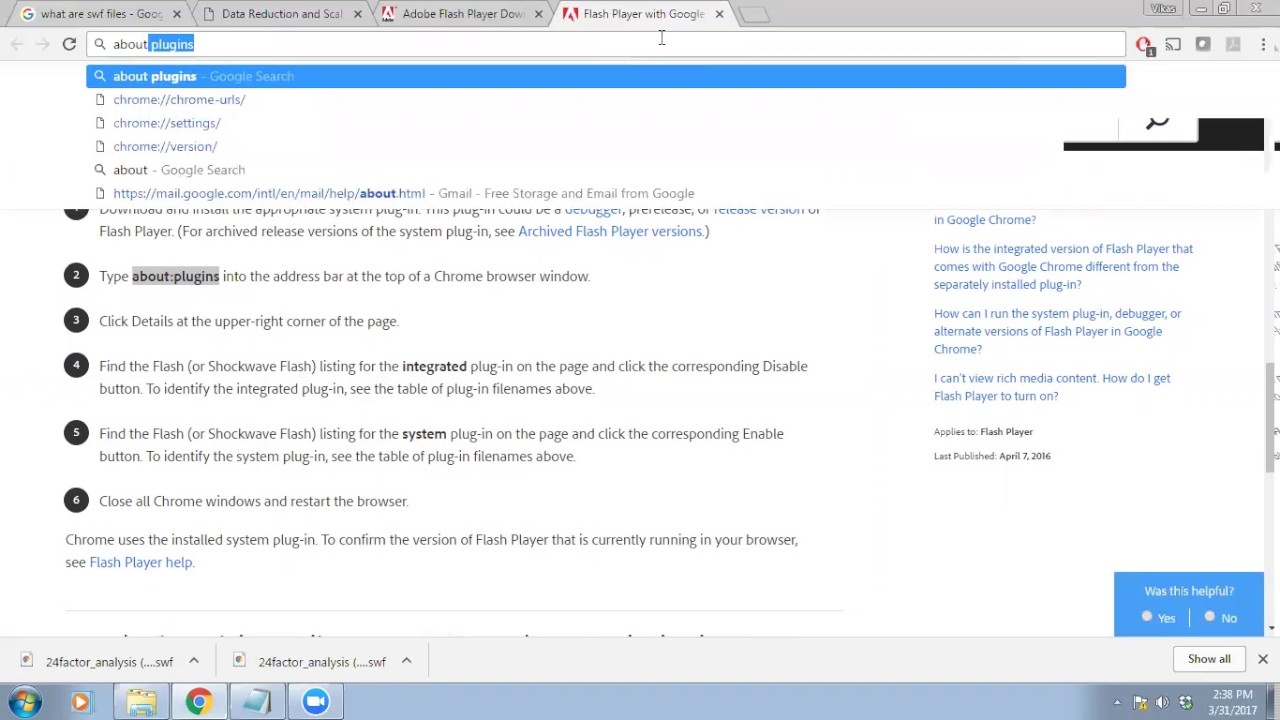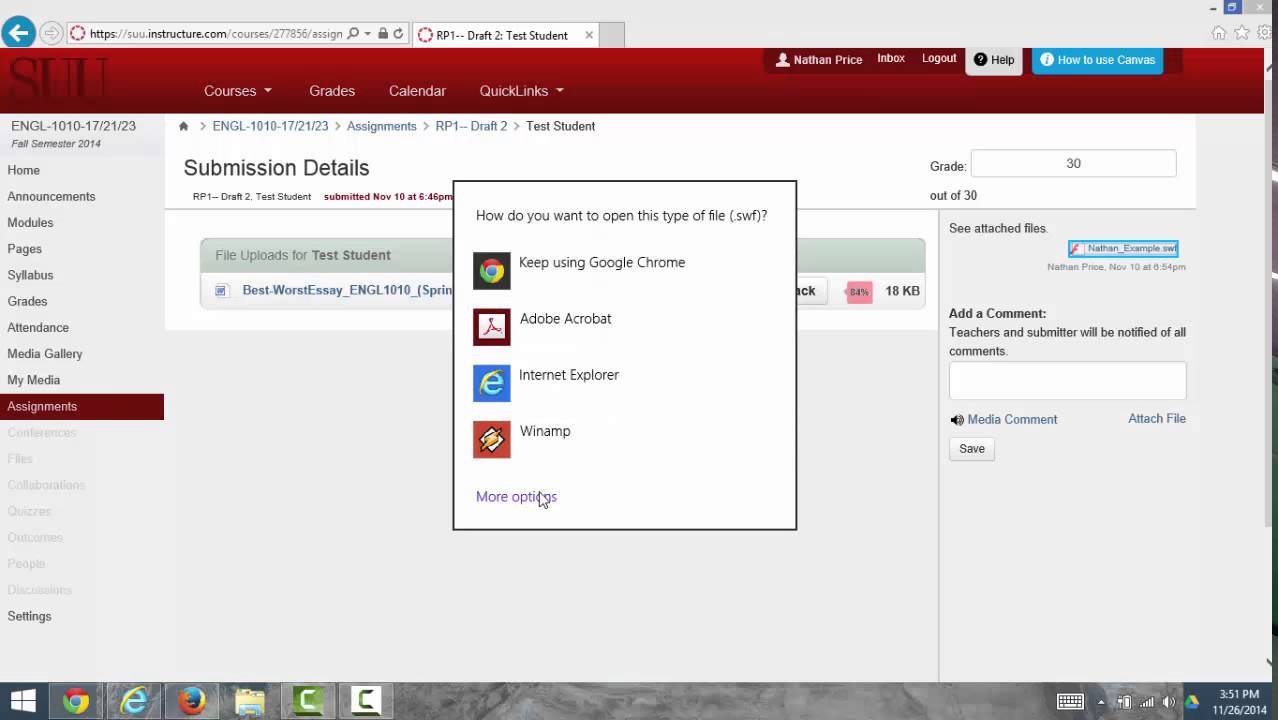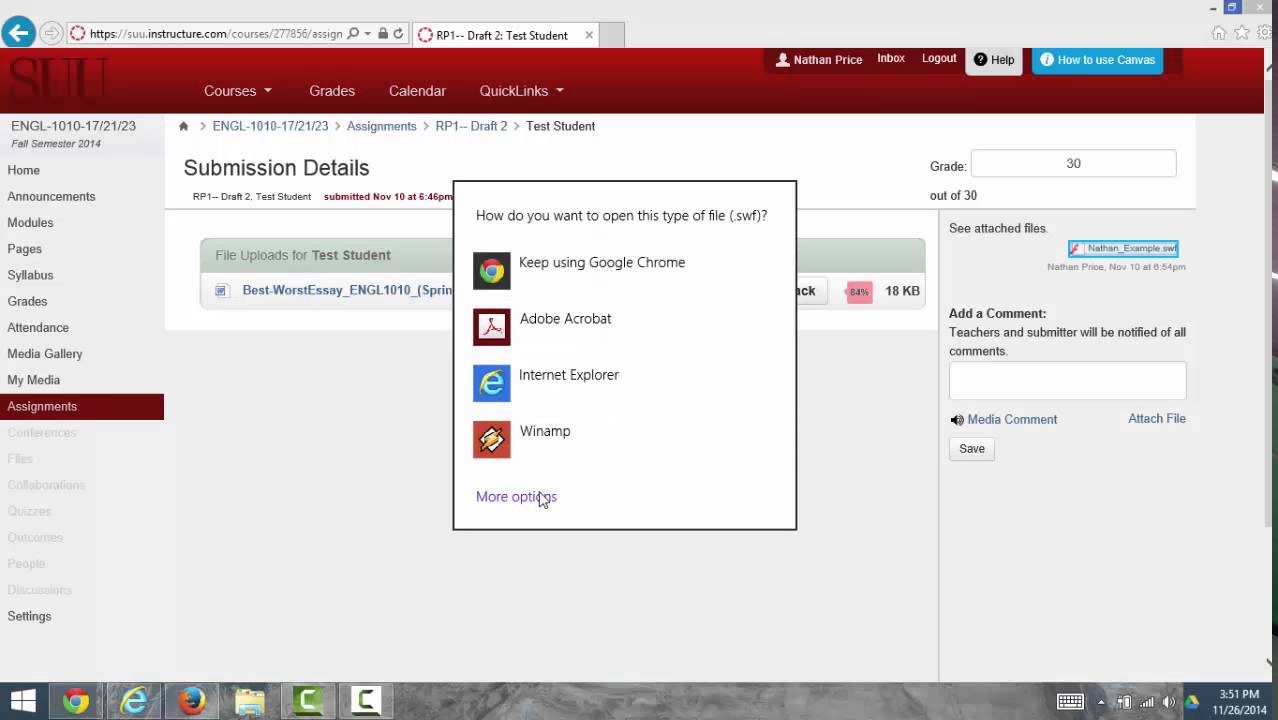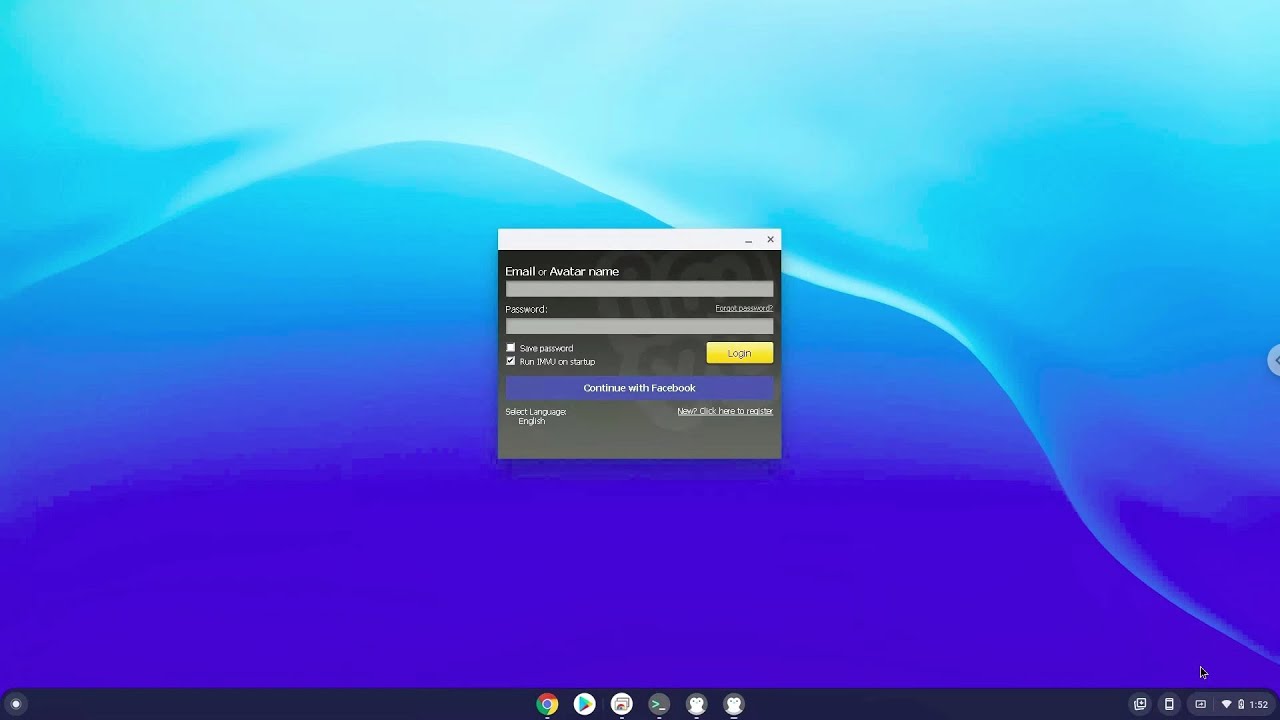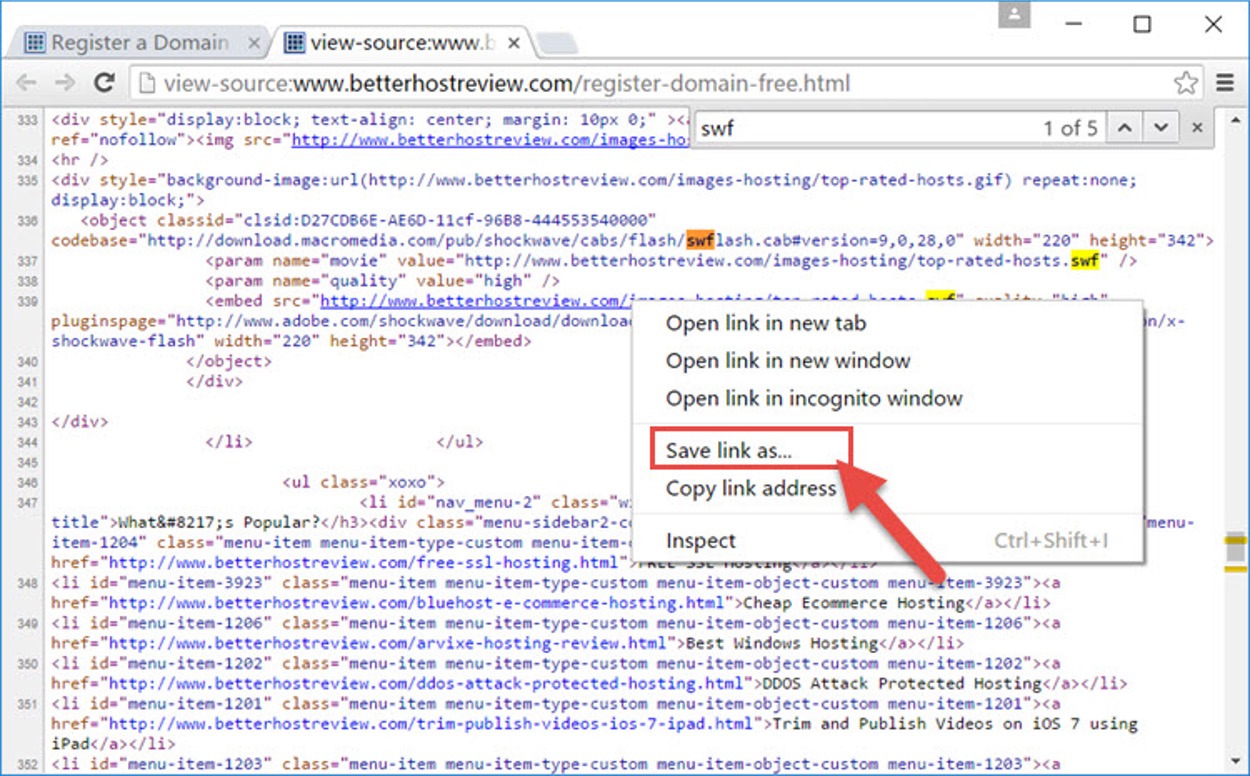Introduction
Playing .swf (Shockwave Flash) files on Chrome can be a bit tricky due to the browser's default lack of support for this format. However, fear not! There are several methods you can use to enjoy your .swf content without having to switch to a different browser. Whether you want to play old Flash games, view interactive multimedia content, or access legacy web applications, there are ways to make it happen within the Chrome browser environment.
In this article, we'll explore three effective methods for playing .swf files on Chrome. From using a Chrome extension to accessing standalone .swf players and even converting .swf files to a more compatible format, we've got you covered. By the end of this guide, you'll have the knowledge and tools to seamlessly enjoy your .swf files directly within Chrome.
So, if you've ever encountered the frustration of trying to open a .swf file in Chrome only to be met with an error message, or if you're simply curious about the options available for playing this type of content, you're in the right place. Let's dive into the methods and discover how to make .swf files compatible with Chrome, allowing you to relive nostalgic experiences or access valuable content that's still distributed in this format.
Now, without further ado, let's explore the first method: using a Chrome extension to enable .swf file playback directly in your browser.
Method 1: Using a Chrome Extension
If you're looking for a convenient and straightforward way to play .swf files within Chrome, using a dedicated extension is an excellent option. One popular extension that enables .swf file playback is "Ruffle." Ruffle is an open-source Flash Player emulator that allows you to run .swf files directly in your browser, including Chrome.
To get started, follow these simple steps:
-
Search for the Ruffle Extension: Open your Chrome browser and navigate to the Chrome Web Store. In the search bar, type "Ruffle" and press Enter. Look for the official Ruffle extension and click on it to access the extension's page.
-
Add the Extension to Chrome: Once you're on the Ruffle extension page, click on the "Add to Chrome" button. A confirmation dialog will appear, asking if you want to add the extension. Click "Add Extension" to proceed.
-
Confirm the Installation: After clicking "Add Extension," Chrome will begin the installation process. You may see a progress indicator as the extension is downloaded and added to your browser. Once the installation is complete, a confirmation message will appear, indicating that Ruffle has been successfully added to Chrome.
-
Accessing .swf Files: With the Ruffle extension installed, you can now open .swf files directly in Chrome. Simply locate the .swf file you want to play, either on your local drive or a website, and click on it. Ruffle will automatically detect the file and initiate playback within your browser window.
By using the Ruffle extension, you can seamlessly enjoy .swf content without having to switch to a different browser or install additional software. This method provides a user-friendly solution for playing .swf files within the familiar Chrome environment, making it a convenient choice for anyone looking to access and interact with .swf content effortlessly.
With the Ruffle extension installed, you can relive the nostalgia of classic Flash games, explore interactive multimedia content, and access .swf-based applications directly within Chrome. This approach not only enhances the versatility of your browsing experience but also ensures that you can make the most of .swf files without encountering compatibility issues.
Now that we've explored the first method of using a Chrome extension to play .swf files, let's move on to the next method: using a standalone .swf player.
Method 2: Using a Standalone .swf Player
When it comes to playing .swf files on Chrome, using a standalone .swf player provides another effective method for seamless playback. While Chrome itself may not natively support .swf files, utilizing a dedicated .swf player allows you to enjoy this content without relying on browser-specific extensions or plugins.
One popular standalone .swf player is "SWF File Player," which is a lightweight and user-friendly application designed specifically for playing .swf files. Here's how you can use a standalone .swf player to enjoy your .swf content within the Chrome browser environment:
-
Download and Install SWF File Player: Begin by downloading the SWF File Player from a trusted source. Once the download is complete, proceed to install the application on your computer. The installation process is typically straightforward and involves following the on-screen instructions to set up the player.
-
Launch SWF File Player: After the installation is complete, launch the SWF File Player application. You will be greeted with a simple and intuitive interface that allows you to easily open and play .swf files.
-
Open .swf Files: With the SWF File Player running, you can now open your desired .swf files directly within the application. Simply use the "Open" or "Open File" option within the player to navigate to the location of your .swf file and initiate playback.
-
Enjoy Seamless Playback: Once you've selected the .swf file, the SWF File Player will seamlessly play the content, providing a smooth and immersive experience. You can interact with the .swf file as intended, whether it's a Flash game, interactive animation, or multimedia presentation.
Using a standalone .swf player offers a convenient and reliable way to access and enjoy .swf content within the Chrome browser. This method eliminates the need for browser-specific extensions and provides a dedicated environment for playing .swf files without any compatibility issues.
By leveraging a standalone .swf player such as SWF File Player, you can relive the excitement of classic Flash content, explore interactive applications, and access multimedia experiences directly within Chrome. This approach empowers you to seamlessly integrate .swf files into your browsing activities, ensuring that you can make the most of this content without any limitations.
Now that we've explored the method of using a standalone .swf player, let's move on to the next method: converting .swf files to another format.
Method 3: Converting .swf Files to Another Format
When playing .swf files on Chrome presents compatibility challenges, converting these files to a more widely supported format emerges as a practical solution. By transforming .swf files into formats such as MP4 or HTML5, you can ensure seamless playback within the Chrome browser without relying on additional plugins or players.
Here's a detailed guide on how to convert .swf files to another format for optimal compatibility with Chrome:
-
Select a Conversion Tool: Begin by choosing a reliable .swf to video converter or .swf to HTML5 converter. There are various software applications and online tools available that specialize in converting .swf files to different formats. Ensure that the chosen tool supports the specific output format you require, such as MP4 for video or HTML5 for web content.
-
Import the .swf File: Once you have the conversion tool at your disposal, import the target .swf file into the software or online platform. This typically involves using the "Import" or "Upload" function within the tool's interface to select the .swf file from your local storage.
-
Choose the Output Format: Depending on the capabilities of the conversion tool, select the desired output format for the converted file. If you intend to play the content as a video within Chrome, opt for the MP4 format. Alternatively, if you aim to integrate the content into a web page, choose the HTML5 format for compatibility with modern browsers.
-
Adjust Conversion Settings (if applicable): Some conversion tools offer customization options for the output file, such as video quality settings for MP4 conversion or interactive elements preservation for HTML5 conversion. If such options are available, adjust the settings according to your preferences to optimize the converted file for Chrome playback.
-
Initiate the Conversion Process: Once you've configured the conversion settings, initiate the conversion process within the tool. Depending on the size and complexity of the .swf file, the conversion may take some time to complete. Be patient as the tool transforms the .swf content into the selected format.
-
Save the Converted File: After the conversion is finished, the tool will typically prompt you to save the converted file to a location of your choice. Ensure that you save the file in a readily accessible location on your computer for easy retrieval.
By converting .swf files to a more compatible format, you can seamlessly integrate the content into your Chrome browsing experience. Whether you're converting Flash-based animations, interactive presentations, or games, this method allows you to overcome the limitations of .swf files within the Chrome browser.
With the converted files in hand, you can effortlessly play and interact with the content directly within Chrome, ensuring a smooth and uninterrupted experience. This approach not only enhances the accessibility of .swf content but also future-proofs it for continued enjoyment within modern browser environments.
Now that we've explored the method of converting .swf files to another format, you have a comprehensive set of options for playing .swf files on Chrome. Whether you choose to utilize a Chrome extension, a standalone .swf player, or the conversion method, you can now enjoy your .swf content seamlessly within the Chrome browser environment.
Conclusion
In conclusion, playing .swf files on Chrome is indeed achievable through various effective methods. Whether you opt for the convenience of using a Chrome extension like Ruffle, the dedicated environment provided by a standalone .swf player, or the versatility of converting .swf files to another format, you have the power to seamlessly enjoy your .swf content within the familiar Chrome browser environment.
By leveraging the Ruffle extension, you can effortlessly enable .swf file playback directly in Chrome, eliminating the need to switch to a different browser or install additional software. This method not only enhances the accessibility of .swf content but also ensures a smooth and immersive experience for reliving classic Flash games, exploring interactive multimedia content, and accessing .swf-based applications.
Similarly, utilizing a standalone .swf player such as SWF File Player provides a reliable and user-friendly solution for playing .swf files within Chrome. This approach eliminates the reliance on browser-specific extensions and plugins, offering a dedicated environment for seamless .swf file playback. With the standalone player, you can immerse yourself in the excitement of Flash content and multimedia experiences without encountering compatibility issues.
Furthermore, the option of converting .swf files to another format opens up new possibilities for integrating .swf content into the Chrome browsing experience. By transforming .swf files into formats such as MP4 or HTML5, you can ensure optimal compatibility with modern browsers, including Chrome. This method future-proofs your .swf content, allowing for continued enjoyment and interaction within the evolving landscape of web technologies.
In essence, the methods outlined in this guide empower you to overcome the challenges of playing .swf files on Chrome, providing a seamless and enjoyable experience for accessing and interacting with .swf content. Whether you choose to embrace the convenience of a Chrome extension, the dedicated environment of a standalone .swf player, or the adaptability of converting .swf files to another format, you now have the knowledge and tools to make the most of your .swf files within the Chrome browser environment. So go ahead, relive the nostalgia of classic Flash content, explore interactive multimedia experiences, and seamlessly integrate .swf files into your Chrome browsing activities with confidence and ease.







